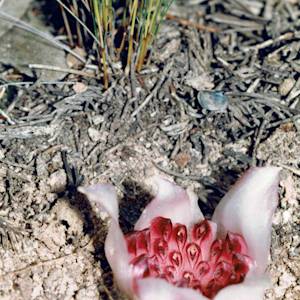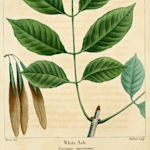Shinnery Oak, Quercus havardii
20th Century • Texas
"Among the most unusual of biotic communities in North America is the sand-shinnery oak community occurring on sandy deposits in western Texas, eastern New Mexico, and southwestern Oklahoma." - Steven Mayes Quercus havardii is an unusual looking oak, more like a groundcover than a tree, but like other oaks it is a keystone species within its community. The majority of the plant is underground, with only one tenth visible to the human eye, its roots extending up to 18 ft into the sandy soil where it thrives. These root systems are critical to stabilizing the soil and creating habitat for other species. Historically Quercus havardii occupied five to seven million acres in the Southern Great Plains, its range has been diminised by agriculture, grazing, and development.
E. Beckman, S. Hoban, R. McCauley, A. Meyer, and M. Westwood, "Quercus havardii Rydb," in E. Beckman, A. Meyer, G. Man, D. Pivorunas, A. Denvir, D. Gill, K. Shaw, and M. Westwood, Conservation Gap Analysis of Native U.S. Oaks (Lisle, IL: The Morton Arboretum), 122-127.
image: Shinnery Oak. Quercus havardii. NPS photo by Neal Herbert.


Learn about Maya Lin’s fifth and final memorial: a multi-platform science based artwork that presents an ecological history of our world - past, present, and future.

Discover ecological histories and stories of former abundance, loss, and recovery on the map of memory.

Learn how we can reduce our emissions and protect and restore species and habitats – around the world.

See how art can help us rethink the problems we face, and give us hope that each one of us can make a difference.

Help make a global memorial something personal and close to home. Share your stories of the natural world.


